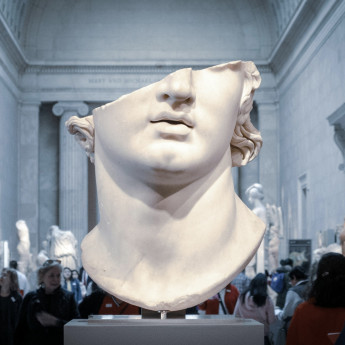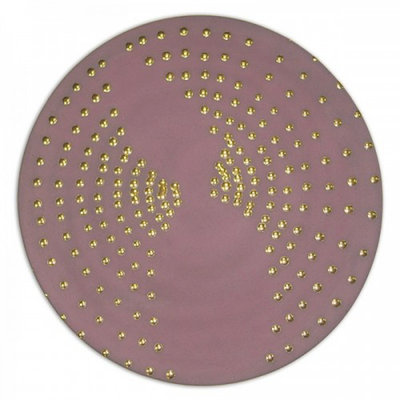
Details
Artist
Styles
// Senza titolo by Agostino Bonalumi, created in 1990, is a bronze sculpture that reflects the artist's interest in form, tension, and the manipulation of materials to evoke a sense of movement. The piece features a rectangular shape with its surface distorted as if stretched and pulled from within, creating an illusion of elasticity despite the solid bronze medium. This tension between material and form highlights Bonalumi’s unique approach to three-dimensional art, where abstract shapes invite viewers to ponder the invisible forces acting upon them. This sculpture combines a polished finish with soft contours, lending it both a dynamic presence and an understated elegance, characteristic of Bonalumi's sculptural work.
Senza titolo, 1990
form
Medium
Size
25 x 17 X 7 cm
- Inches
- Centimeters
Edition
Price
- USD
- EUR
- GBP
Details
Artist
Styles
// Senza titolo by Agostino Bonalumi, created in 1990, is a bronze sculpture that reflects the artist's interest in form, tension, and the manipulation of materials to evoke a sense of movement. The piece features a rectangular shape with its surface distorted as if stretched and pulled from within, creating an illusion of elasticity despite the solid bronze medium. This tension between material and form highlights Bonalumi’s unique approach to three-dimensional art, where abstract shapes invite viewers to ponder the invisible forces acting upon them. This sculpture combines a polished finish with soft contours, lending it both a dynamic presence and an understated elegance, characteristic of Bonalumi's sculptural work.
What is the Zero Movement?
ZERO was an art movement founded by Otto Piene and Heinz Mack, aiming to develop into a large international and cross-border movement. The name ZERO originated from a magazine founded by Heinz Mack in 1957, which became a platform for the group's ideas. The magazine was published for several years before ceasing in 1967. The ZERO movement sought to create a new beginning in art, emphasizing light, space, and movement, and became influential in post-war European art.











